Saunas are a highly effective wellness routine that soothes and calms the body. A sauna bath helps relieve stress, improve sleep and muscle recovery, and enhance your ability to fight illnesses.
If you are a first-time sauna user, you may have mixed feelings about what to expect. A sauna may be extreme initially, but your body gets used to it.
A sauna offers you dry heat from a stove or hot rock. It escalates the temperature of the room you are in to 195°F (90.5°C) while ensuring low humidity. Sauna operators usually install a thermometer to help control the room’s temperature.
The steam and heat penetrate your body, making you sweat and improving relaxation. However, you just don’t jump in a sauna bath. There are proper steps and safety measures to help you enjoy the experience without risks.
In this post, we’ll guide you on how to get the most out of your first-time sauna experience while maintaining safety.
Let’s dive in.
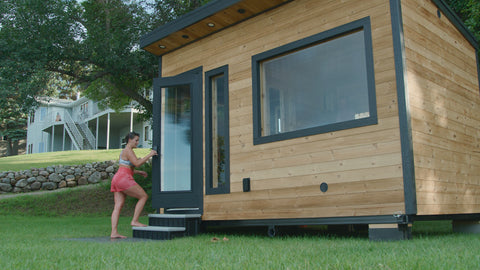
Overview of saunas
Saunas have been around for ages, and there is no accurate data regarding how they started.
Let us look at a brief overview of saunas, including their history, types, and benefits.
History of saunas
The information available suggests that the sauna tradition started in Northern Europe in approximately 2000 BC. This culture continued and remained critical in Russia, Estonia, Latvia, and Finland.
The first or ancient saunas were simply man-made caves covered with animal skin to cover spaces. Inside, they had a fire burning beneath some rocks.
After extinguishing the fire, the smoke would waft and leave the stones, warming the cave. The smoke sterilized the room, mainly a washroom, kitchen, or hospital. People also lived here during the harsh winter weather.
In the Middle Ages, sauna caves were upgraded to sauna dwellings while maintaining the traditions of lighting a fire and filling the room with smoke. There was also an introduction of activities such as beating each other’s bodies with birch branches.
When the Industrial Revolution reached Northern Europe, people began including chimneys in saunas. They allowed them to be heated continuously and faster. These wood-fired saunas are today referred to as authentic saunas.
Presently, you’ll find a sauna(s) in almost every country worldwide. The building techniques have evolved, and people have developed modern ways of generating heat, such as using electric saunas.
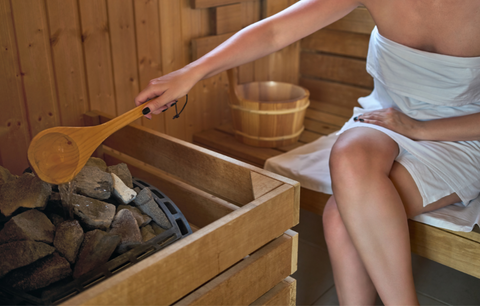
Types of saunas
Various saunas now exist, thanks to their evolution from traditional to modern models. Nordak Sauna Co specializes in designing a diverse collection of saunas that can fit in nearly any indoor or outdoor space.
Here are the most popular types of saunas:
Electric sauna
An electric sauna heats through convention where electricity passes through resistive elements. The resistance converts electric energy to heat energy and transfers it to the sauna rocks.
Electric saunas maintain direct contact between the stones and heating elements to ensure maximum effectiveness.
See also: Custom Saunas: Your Guide from Design to Maintenance
Infrared sauna
An infrared sauna is a modern model that replaces a traditional stove with infrared emitters. It emits a special type of radiation with temperatures not exceeding 60°C.
The humidity is also low and reaches a maximum of 25%. This makes infrared sauna sessions last longer, allowing you up to 30 minutes daily.
Infrared saunas are ideal for people who cannot withstand the heat in other saunas. They are common among people with dementia, arthritis, Alzheimer’s disease, and type 2 diabetes.
You may also like: Comparing Traditional and Infrared Saunas.
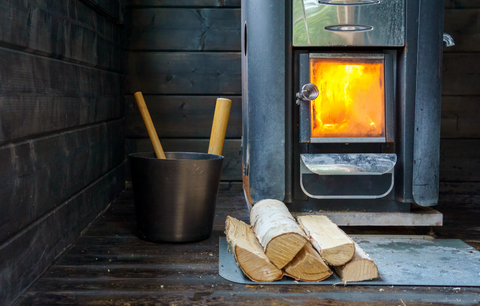
Wood-burning sauna
This traditional sauna works similarly to an electric sauna but with a more traditional setup. A wood-burning sauna uses a metal stove called kiuas in Finnish with a layer of sauna stones on top.
Burning wood in the stove heats the stones, which spread heat into the sauna room. You can splash water on the sauna rocks to create steam.
Dry sauna
The traditional Finnish sauna is a dry sauna with temperatures ranging from 80 – 100°C and humidities up to 10%. A dry sauna offers health benefits for people with rheumatoid disease, asthma, and joint pain.
It is also ideal for people who have just suffered a heart attack. However, the doctor has to consent to this, mainly recommending a maximum of one 12-minute session per week.
Read also: Why Sauna Sessions Are More Than Just Relaxation: Health Benefits Explained.
How to prepare for a sauna session
Before going for a sauna session, here are some things to do for a safe and memorable experience:
Talk to your doctor
Despite the multiple health benefits saunas offer, they are not ideal for everyone. People with health conditions such as diabetes, high blood pressure, and heart failure or on certain medications may experience negative effects.
Sauna sessions are also not recommended for pregnant women or those intending to get pregnant. Your doctor can advise whether you must limit your sauna sessions or what measures to take to remain safe.

Hydrate yourself
During a sauna bath, your body releases toxins and water. While the body benefits from losing these impurities, you must replace the water and keep your body hydrated. Take a lot of water before and after your sauna sessions.
Shower before sauna sessions
Taking a quick shower before sauna bathing helps remove excess oil and perfumes that can become pungent in the steam room. You can also use a light body scrub to help exfoliate your skin.
Dry off your body
Even after a quick shower, you need to dry off your body apart from your legs to help speed up perspiration. You can use warm water since cold water can slow the effects of perspiration.
Take light or no meals
When detoxing, the human body needs to focus on the specific function for maximum effectiveness. If you eat a heavy meal before entering a sauna room, your body will focus on digestion and detoxing, making the sauna less effective.
If you’re hungry, grab a small salty snack. If you must eat, ensure it is one to two hours before your sauna session.
What is the recommended duration for a beginner to spend in a sauna?
Every sauna bath should last 15-20 minutes. Beginners may initially have difficulty coping with the extreme heat and should start with 5 minutes.
You can increase the time with every session as your body adapts to being close to a sauna heater.
For beginners, you should spend at most 15 minutes on your first experience. Some people who are sensitive to heat are incapable of bearing that long.
You can use an hourglass found in most saunas to keep track of time and leave when the heat is enough for you. You can gradually increase the time you spend in a steam room with sessions as your body adjusts to the hot air.
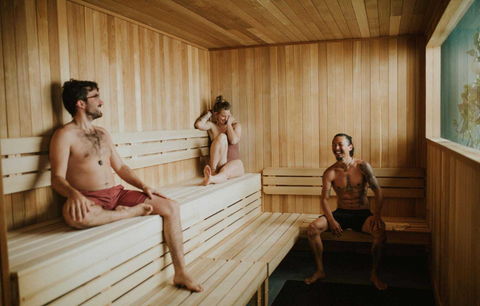
Achieving the Perfect Sauna Session: A Guide with Flexibility and Tips
While many sauna enthusiasts rely on their own instincts and comfortability, it is particularly helpful for new sauna user to be able to time intervals and learn the ropes. Use this guide emphasizes listening to your body’s cues while offering a structured approach for those new to the practice:
- Intuitive Heat Session (5-25 minutes):
- Start with a heat session, allowing yourself 5 to 25 minutes of warmth. While beginners might find it helpful to use a timer or watch to keep track, experienced sauna-goers often rely on their body’s signals to decide when it’s time to exit the sauna. This phase is about warming your muscles, opening your pores, and initiating detoxification through sweat.
- Natural Cool Down (5-10 minutes):
- Follow up with a cool-down period, stepping outside the sauna or taking a cool shower for 5 to 10 minutes. This practice helps in regulating your body’s temperature, improving circulation, and closing pores. Whether you’re timing this phase or simply listening to how your body feels, it’s a crucial step in the sauna experience.
- Rest and Reflect (5 minutes):
- Dedicate around 5 minutes to rest after cooling down. This is your moment to allow your heart rate to normalize and your body to recover. For those who prefer a more intuitive approach, use this time for quiet reflection or meditation, letting your body’s natural rhythms guide your rest period.
- Hydration Is Key:
- Throughout your sauna session, ensure you’re rehydrating by drinking water. Hydration is crucial for replenishing fluids lost through sweating. While a timer isn’t necessary for this step, keeping a water bottle close and taking sips between cycles is recommended.
- Repeat with Awareness (3-4 times):
- Complete 3-4 cycles for a thorough sauna experience, adjusting based on your personal comfort and time available. While beginners might appreciate the structure of repeating these steps, experienced users often follow their own rhythm, focusing on how each cycle feels.
Incorporating timers or watches can be particularly useful for those new to the sauna, helping to gauge tolerance and ensure safety. However, as you become more accustomed to the sauna experience, you may find yourself naturally tuning into your body’s needs and preferences, moving away from strict timings towards a more intuitive session. Remember, the key to a rewarding sauna experience is finding the balance that works best for you.
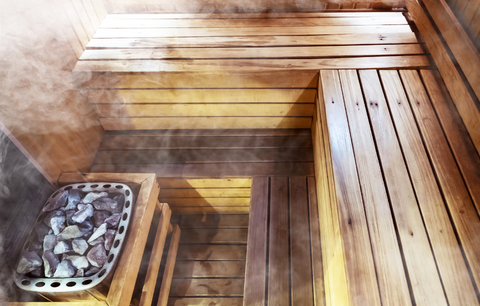
What is the suitable temperature for beginners in a sauna?
The best temperature in a traditional sauna for beginners ranges between 70-90°C. Infrared saunas are much more relaxed, with the ideal temperatures ranging from 38-65°C.
Most saunas today may not be traditional, but they have a similar style, hence the same recommended temperature. You should always keep track of your core temperature and know when you’ve had enough.
If you suffer from any illness or are on medication, speak to your doctor so they can recommend the best sauna temperatures for your body.
What to do after a sauna session
A sauna can be intense, especially if you spend more than the recommended time in the room. After every session, there are things you can do to help your body cool down. You should:
Take a break
Most people find taking a break in a cold pool or chilly lake a refreshing way to calm the body. If that is not possible, you can take a cold shower and wait for your body temperature to go down before getting dressed.
Drink something refreshing
When leaving the sauna room, your body temperature is still above average. You can lower it by drinking something cold and refreshing like water.
After a sauna bath, a refreshing drink also allows you to regain the body fluids you lost through sweat.
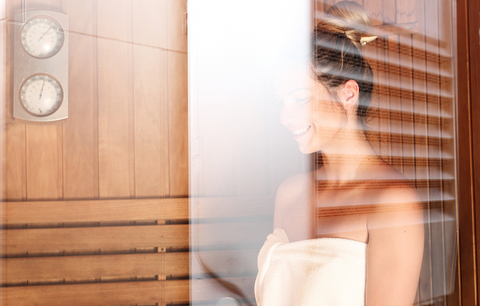
Other essential tips to know when using a sauna
Let us look at other tips to help you enjoy your first-time sauna experience:
Monitor your body temperature
The human body cannot withstand extreme temperatures, especially for dehydrated people or those suffering from certain medical conditions.
If you feel dizzy or nauseous, step out and cool down. You should also take breaks between sessions for a healthier experience.
Meditate and take deep breaths
Taking in deep breaths and meditating in a sauna can be extremely relaxing. Your thoughts flow freely as the warmth in the room loosens up your body and mind.
You can practice counting as you inhale slowly through your nose. You may even feel your stress evaporating around you with each breath you take.
Use essential oils
Oils such as eucalyptus and lavender can greatly impact your sauna experience. They can stimulate your mental clarity and promote calmness, enhancing meditation.
Other oils like menthol and peppermint can help decongest and clear nasal and sinus congestion.
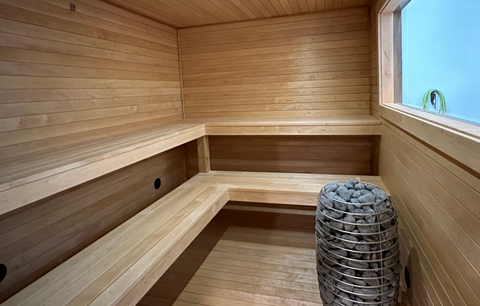
Enjoy the silence
It is until you sit in silence that you remember how noise-polluted the world has become. The faint crackle of heated sauna rocks and the hissing sound of steam provide a soothing feeling.
Don’t chat with a friend in the sauna or carry your phone. Take this opportunity to disconnect from the world and connect with your body.
Dedicate enough time for your sauna bath
Schedule your sauna sessions well and allocate enough time for the entire process. The room must heat up, which may take 30-60 minutes. You’ll also need a few minutes in the room and enough time to cool down your body and let your body recover.
If you have a home sauna, allocate enough time to switch off your sauna heater and clean the room for the next session.
Avoid alcohol
If you drink alcohol and take a sauna bath, you increase your risk of getting a heart attack. Since saunas increase your heart rate and body temperature, the heart has to work harder to ensure blood circulation.
Taking alcohol and going into a sauna cripples the body’s ability to maintain blood pressure. This causes more stress on the heart and liver. Do not use a sauna for your hangover recovery. Instead, take a nap.
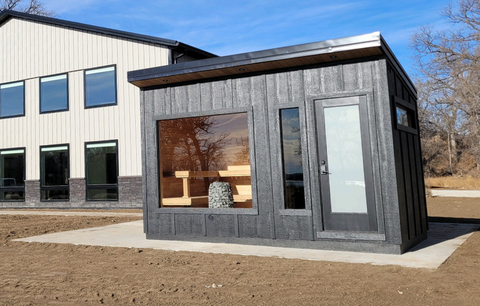
Takeaway: Enjoy your sauna safely with our comprehensive guide!
Regular sauna helps ease pain, increase metabolism, reduce stress, and improve cardiovascular function. If you are yet to experience your first sauna session, there are things you need to do to prepare.
You must be well-updated on your health or medication to know if you are at risk during a sauna bath. You must also understand how to operate and maintain a sauna if you own one.
At Nordak Sauna Co, we are dedicated to promoting wellness through safe sauna experiences. See how our custom saunas can enhance your home and wellness routine.
We have tons of experience crafting both traditional and modern saunas.




